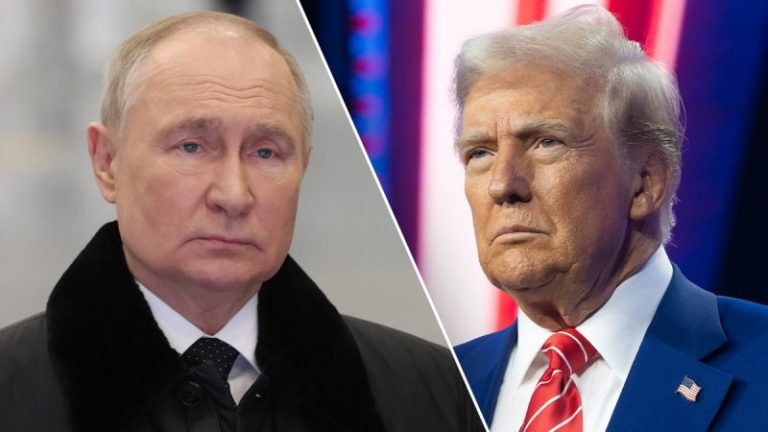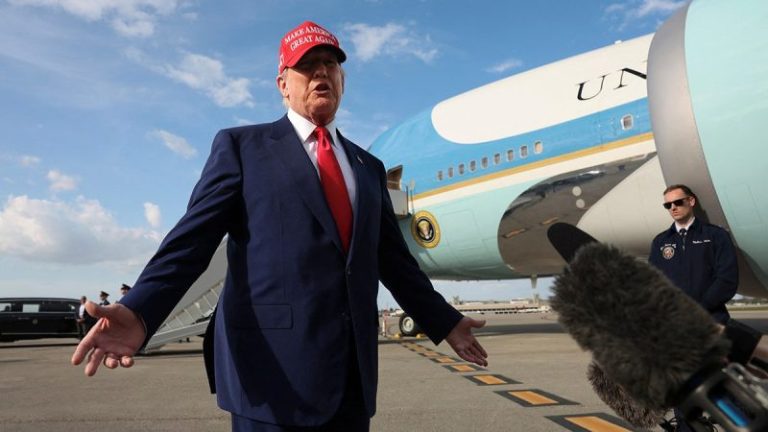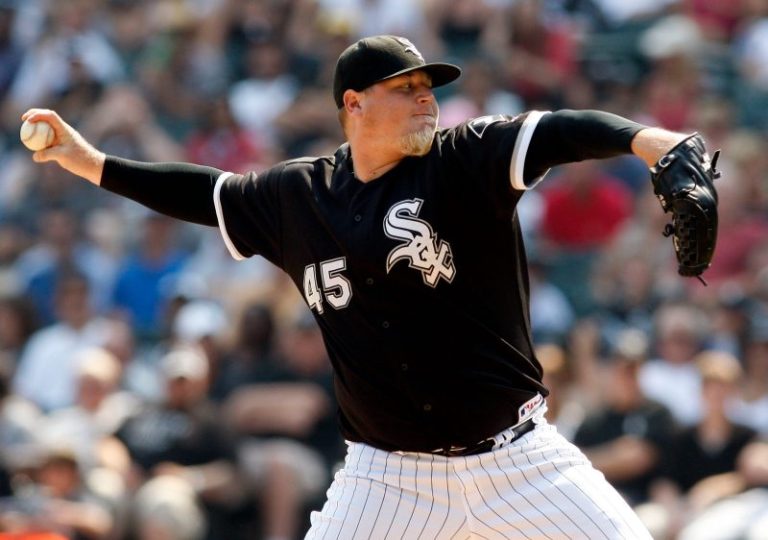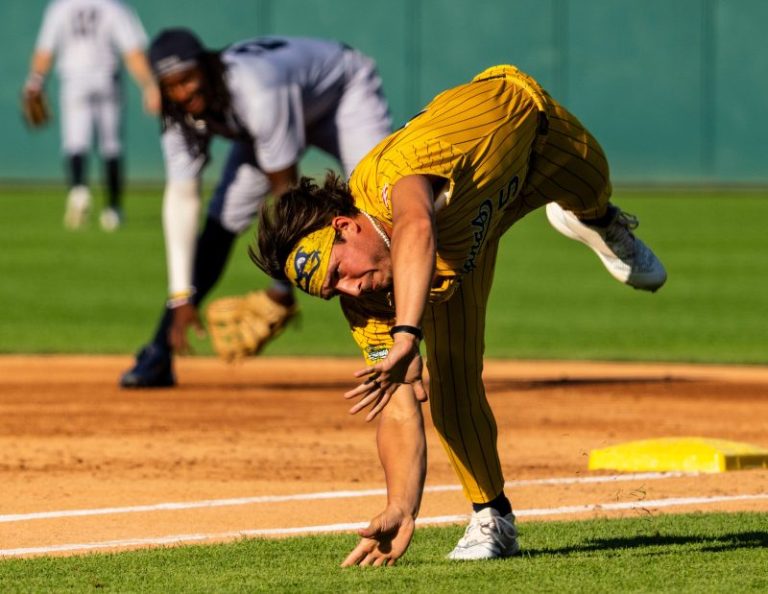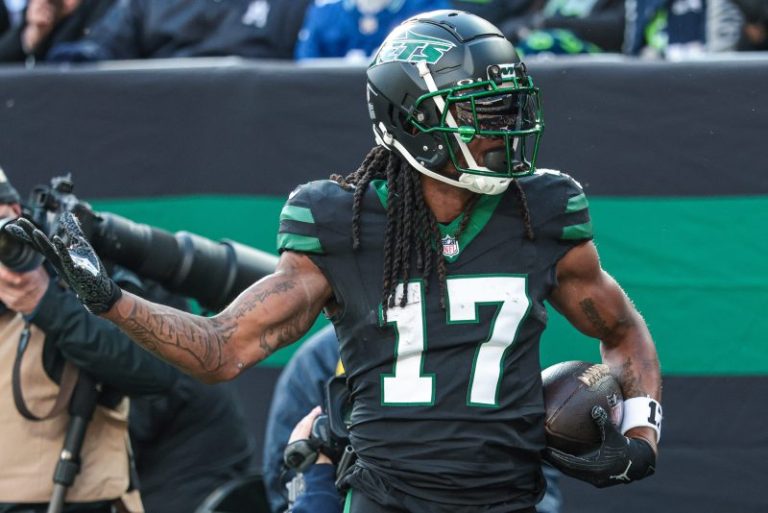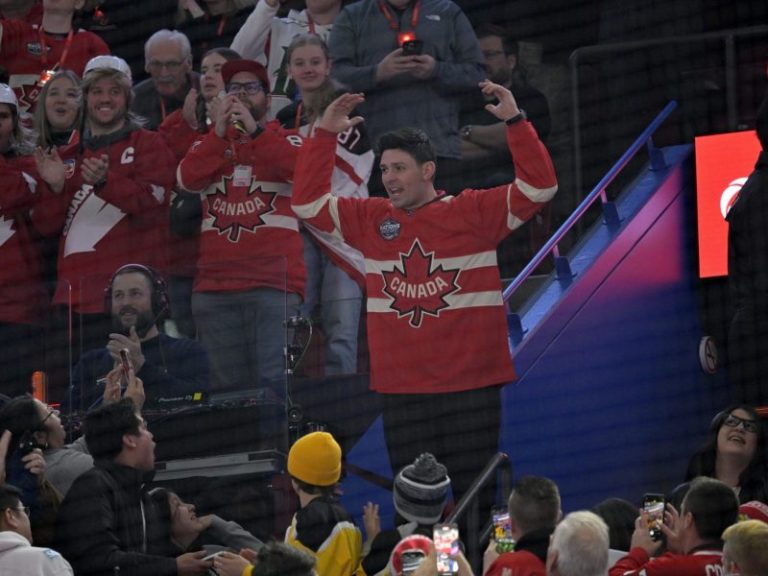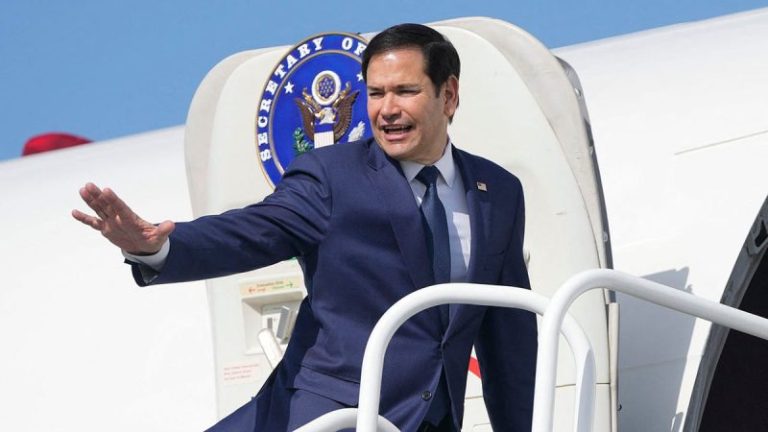One of hockey’s great rivalries delivered as the United States downed Canada 3-1 in a fiery 4 Nations Face-Off game Saturday night.
The first nine seconds of play saw no less than three fights, but ultimately Team USA’s three goals were enough to clinch a spot at Thursday’s tournament final in Boston. Jake Guentzel scored twice, while Dylan Larkin snapped home what turned out to be the game-winner in the second period.
That allowed the United States to come back after Canada — following the bizarre spectacle of a game beginning with three consecutive fights — struck first on a skillful goal from Connor McDavid. However, the early emotion at Montréal’s Bell Centre wasn’t enough for Canada, who played without key defenseman Cale Makar (who couldn’t play due to an illness).
The victory means the USA will play in the 4 Nations Face-Off final no matter what happens in Monday’s game against Sweden. Meanwhile, the Swedes, Canada and Finland are all tied on two points in the round-robin standings, leaving all three teams with a serious shot at a spot in the championship game.
Here’s what to know about Team USA’s impressive win over Canada:
USA vs. Canada highlights
Any set of highlights from USA vs. Canada would have to include the surprise development that was three fights in the first nine seconds of this 4 Nations Face-Off game.
Once the brawling stopped and the hockey started, it was Canada getting out in front after an excellent Drew Doughty pass found Connor McDavid on the move. From there, the Edmonton Oilers star carved through Team USA before burying a top-shelf shot past Connor Hellebuyck.
However, Jake Guentzel had a quick response, slipping a wrister past Canada’s Jordan Binnington less than five minutes later. In retrospect, the rather soft nature of this goal might have taken some energy out of the building, letting Team USA gain focus at a critical early moment.
Guentzel would go on to score an empty-netter to put the game away, but the winning goal came from Dylan Larkin, the man who got the assist on that late tally. Larkin’s second-period goal came as the U.S. pounced on a turnover while Canada was in the midst of a line change, with the Detroit Red Wings center giving Binnington no chance at a save.
Final score: USA 3, Canada 1
Team USA is going to the championship final of the 4 Nations Face-Off after claiming a gritty 3-1 win over Canada. Despite Canada pouring plenty of emotion into the game, the U.S. played an excellent game of defensive hockey, leaving goalie Connor Hellebuyck with relatively few big stops to make.
Jake Guentzel struck twice, while Dylan Larkin had the game-winning goal and the assist to ice the win. Team USA will still have to face Sweden on Monday, but no matter the result, they will take part in the tournament final next Thursday in Boston.
Canada, meanwhile, faces a must-win game against Finland on a few hours less rest. Canada, Finland, and Sweden all enter the final round of games with 2 points in the standings.
Goal USA: Guentzel buries empty-netter to make it 3-1
With two minutes to play, Canada has rolled the dice. Binnington has skated to the bench, and the power play unit (plus an extra man) is out there looking to make this 2-2.
However, there was no angle to create anything serious in front of Hellebuyck, and eventually the risk backfired. That saw Larkin control the puck in the neutral zone, finding the (barely onside) Jake Guentzel for an empty-netter.
Team USA efficiently killing this period off
Canada is working very hard to try and create more end-to-end play, but with just 2:54 to go, the U.S. is closing the angles and defending in layers, keeping the game between the blue lines for long spells.
Canada has fired a few pucks on net in this spell, but Hellebuyck has been able to handle everything with relative ease. At the other end, Canada’s risk-taking in pursuit of a leveler has left Binnington exposed, only for the St. Louis Blues goalie to come up with some solid saves to keep the score 2-1.
ABC: Tkachuk said ‘I can’t go’
Team USA has adjusted their lines without Matthew Tkachuk, with J.T. Miller now sharing a line with Brady Tkachuk and Jack Eichel. ABC’s Ray Ferraro has reported that he told the coaching staff ‘I can’t go.’
As we move into the final eight-plus minutes of regulation, Tkachuk has not come back into the game since communicating the issue to the bench.
Score remains 2-1, Matthew Tkachuk may be injured
With 13:16 to go, the third period has largely gone Canada’s way. They’re getting the jump on Team USA, particularly in the neutral zone, and their forecheck is forcing the U.S. to just clear and regroup on most occasions.
The U.S. did have one great look on the break, but an errant pass foiled Guentzel. As of now, Larkin’s goal was the last shot on net.
Meanwhile, a conversation on the U.S. bench seems to hint at an injury for Matthew Tkachuk. After an exchange with Team USA assistant coach John Tortorella, Tkachuk moved to the end of the bench and is looking on fairly grimly. It’s not clear what might be impacting him, but he hasn’t come back out since the conversation.
Third period underway
We have 20 minutes of regulation left between USA and Canada at Bell Centre.
A regulation win here would guarantee Team USA a place in Thursday’s 4 Nations Face-Off final, while a Canadian comeback could see this game’s hosts end the night atop the round-robin standings.
End of second period: Team USA leads 2-1
We’re through two periods, and the United States grabbed a 2-1 lead through Dylan Larkin’s goal.
With the brawling and squabbling of the opening minutes, this game could have become a running series of heavy hits and penalties, but it’s really gone in the opposite direction. The second period saw both teams focus on controlling zones and trying to get the puck into more promising positions. We could have gotten a game full of animosity and low on actual hockey, but all parties seem focused on trying to win the game.
Team USA probably deserves to have a lead at this point, as they’ve exerted slightly more control over the game and created more shooting chances. However, when Canada has gotten the puck in deep for sustained pressure, they seem to be able to work it into dangerous positions. The U.S. has done enough to escape those moments, but it’s clear that Canada could easily tie this one up.
Goal, Team USA: Larkin zips one past Binnington to make it 2-1
With this second period playing out evenly, Team USA has taken a 2-1 lead seemingly out of the blue thanks to Dylan Larkin.
In truth, there’s opportunism involved: Canada turned the puck over just as they started a line change, with Matt Boldy guiding his interception towards Larkin. Suddenly, the U.S. had a two-on-one, and Larkin used the extra man to freeze Travis Sanheim (who had hopped over the boards just three seconds earlier) before zipping a wrist shot into the bottom corner.
With 6:27 to go in the second, Team USA has the lead.
Noah Hanifin saves potential goal for Canada, Larkin hits post
Vegas Golden Knights defenseman Noah Hanifin just made a huge play to deny Canada the lead. Five minutes into the second period, McDavid caught Team USA’s Adam Fox, bringing the defenseman down without giving away a penalty.
Suddenly Canada had a three-on-one, but Hanifin used sharp positioning to prevent a McDavid shot, then intercepted a pass attempt that would have left Sam Reinhart with a wide-open shot from close range.
Play moved to the other end of the rink, where Dylan Larkin’s shot clanked off the post and bounced away. Binnington may or may not have gotten a touch on the shot, but either way Team USA was about two inches from taking the lead.
Brady Tkachuk: Fights ‘happened pretty organically’
In an interview with ABC during the intermission, Brady Tkachuk — a participant in the second of those three fights in this game’s opening nine seconds — said that there wasn’t a ton of planning involved.
‘I think it just happened pretty organically,’ the Ottawa Senators forward told ABC’s Emily Kaplan. ‘Matthew [Tkachuk] said he wanted to go first, and yeah, it just happened.’
Tkachuk added that his brother decided to approach Brandon Hagel when he saw the starting lineups. As for his fight? Just a matter of setting up an appointment, more or less. ‘I coordinated with Benny [Canada’s Sam Bennett],’ explained Tkachuk.
First period ends 1-1
Canada seemed to spend that entire power play on the cusp of a goal, but some sharp stops from Hellebuyck to deny Brayden Point twice (once from an angle, and once on the doorstep) keep this game 1-1.
Still, it feels like Canada recovered some momentum with the execution on that 5-on-4 sequence, with their first shots in over 10 minutes. Team USA will still feel like they’ve had the better of this game thus far, but Team Canada’s pushback late underlines how tight things have been in this first period.
Teams exchange power plays near end of first period
Sidney Crosby took a seat for two minutes after getting called for a hooking penalty, but despite three really good looks in front, Team USA will start off 0-for-1 on the power play after going scoreless.
Meanwhile, the big hits are flying, with both teams laying into one another. With 3:13 left in the period, it’ll be Canada back on the power play as Guentzel is caught tripping Josh Morrissey. Big moment for Canada to swing the momentum, as the United States has been having the better of the last few minutes.
Goal USA: Guentzel squeezes one past Binnington to make it 1-1
Jake Guentzel has this game level, and it’s one that Canada goalie Jordan Binnington might want back. Jack Eichel found Guentzel on the left, but the Tampa Bay Lightning left winger wasn’t exactly bringing the thunder with a low-angle wrist shot.
However, Guentzel did enough to slip that effort under Binnington’s pads, and at 10:15 in the first period the scores are even at 1-1.
Goal Canada: Connor McDavid with a smooth finish
Canada strikes first, with Connor McDavid showcasing his speed and stickhandling at 5:31 in the first period.
Drew Doughty scooped a pass towards center ice that met McDavid in stride, and the Edmonton Oilers center did the rest. At full speed, he cut through three Team USA before firing over Hellebuyck’s left shoulder to make it 1-0. It’ll be hard to produce a more clinical goal than that.
Canada power play doesn’t pan out
There’s a lot going on here, but amid the scuffling that turned into the third fight, Canada went on the power play.
Team USA kills it off pretty easily though, with a couple of timely interventions in front of goalie Connor Hellebuyck all that was really required.
USA vs. Canada: Puck drops, and we’re under way with several fights
At the puck drop, we have USA’s Matthew Tkachuk and Canada’s Brandon Hagel agreeing to drop the gloves and fight. No clean hits but a long scuffle ends with both players getting offsetting fighting penalties.
And now it’s Brady Tkachuk fighting Sam Bennett on the ensuing faceoff! ABC reports that Brady Tkachuk was calling Bennett out to set the fight up while the first fight was being sorted.
Team USA throws one on net once play resumes, but we’re now seeing a third fight. This time, it’s J.T. Miller for the U.S. and Canada’s Colton Parayko squaring off.
We are, to be clear, nine seconds into the first period. Here’s the full round-up of fights:
USA vs. Canada: ‘Star-Spangled Banner’ gets some boos
As was the case in the first round of games, a chunk of the crowd at Bell Centre booed the U.S. national anthem, particularly as it started and ended. Given the geopolitical realities at play following the election of Donald Trump, it’s not exactly a stunning development.
Following a rendition of ‘O Canada’ that was partially sung by the crowd, fans break out into chants for Team Canada and captain Sidney Crosby.
USA vs. Canada: Players on ice, Michelle Kwan booed
Both teams have an accomplished athlete introduce them to the crowd at Bell Centre. Michelle Kwan took the ice and — presumably due to her Team USA hockey sweater and not any animus towards her personally — was roundly booed while introducing Team USA.
MMA great Georges St-Pierre was received with more warmth by the crowd as he brought Canada out. Fans are wearing light-up necklaces, adding to the wild atmosphere in Montréal.
USA vs. Canada: Cale Makar confirmed out
Big news right as ABC’s broadcast of Saturday’s 4 Nations Face-Off meeting gets going: Canada defenseman Cale Makar, arguably one of the NHL’s best D-liners, has been ruled out of this game due to illness.
Emergency call-up Thomas Harley, who per ABC has not had time to get a practice session in with Canada, is in the lineup instead.
When is the 4 Nations Face-Off between USA and Canada?
The 4 Nations Face-Off pitting USA against Canada starts at 8 p.m. ET with coverage on ABC and ESPN+.
All times Eastern.
Game starts: 8 p.m. ET
USA vs. Canada 4 Nations Face-Off TV channel: How to watch
TV channel: ABC
USA vs. Canada 4 Nations stream: How to stream Face-Off event
The game will be carried on ABC as well as ESPN+. You can also watch on Sling.
Watch USA vs. Canada with Sling
4 Nations Face-Off schedule, TV and results
(Times p.m. ET)
Wednesday, Feb. 12: Canada 4, Sweden 3 (OT)
Thursday, Feb. 13: USA 6, Finland 1
Saturday, Feb. 15: Finland 4, Sweden 3
Saturday, Feb. 15: USA vs. Canada at Montreal, 8, ABC
Monday, Feb. 17: Canada vs. Finland at Boston, 1, TNT
Monday, Feb. 17: Sweden vs. USA at Boston, 8, TNT
Thursday, Feb. 20: Championship game at Boston, 8, ESPN
Team USA: 4 Nations roster
No., position, player, NHL team
12 F Matt Boldy, Minnesota Wild
81 F Kyle Connor, Winnipeg Jets
9 F Jack Eichel, Vegas Golden Knights
59 F Jake Guentzel, Tampa Bay Lightning
86 F Jack Hughes, New Jersey Devils
20 F Chris Kreider, New York Rangers
21 F Dylan Larkin, Detroit Red Wings
34 F Auston Matthews, Toronto Maple Leafs
10 F J.T. Miller, New York Rangers
29 F Brock Nelson, New York Islanders
7 F Brady Tkachuk, Ottawa Senators
19 F Matthew Tkachuk, Florida Panthers
16 F Vincent Trocheck, New York Rangers
14 D Brock Faber, Minnesota Wild
23 D Adam Fox, New York Rangers
25 D Charlie McAvoy, Boston Bruins
15 D Noah Hanifin, Vegas Golden Knights
85 D Jake Sanderson, Ottawa Senators
74 D Jaccob Slavin, Carolina Hurricanes
8 D Zach Werenski, Columbus Blue Jackets
37 G Connor Hellebuyck, Winnipeg Jets
30 G Jake Oettinger, Dallas Stars
1 G Jeremy Swayman, Boston Bruins
Team Canada: 4 Nations roster
No., position, player, NHL team
9 F Sam Bennett, Florida Panthers
71 F Anthony Cirelli, Tampa Bay Lightning
87 F Sidney Crosby, Pittsburgh Penguins
38 F Brandon Hagel, Tampa Bay Lightning
24 F Seth Jarvis, Carolina Hurricanes
11 F Travis Konecny, Philadelphia Flyers
29 F Nathan MacKinnon, Colorado Avalanche
63 F Brad Marchand, Boston Bruins
16 F Mitch Marner, Toronto Maple Leafs
97 F Connor McDavid, Edmonton Oilers
21 F Brayden Point, Tampa Bay Lightning
13 F Sam Reinhart, Florida Panthers
61 F Mark Stone, Vegas Golden Knights
89 Drew Doughty, Los Angeles Kings
8 D Cale Makar, Colorado Avalanche
44 D Josh Morrissey, Winnipeg Jets
55 D Colton Parayko, St. Louis Blues
6 D Travis Sanheim, Philadelphia Flyers
27 D Shea Theodore, Vegas Golden Knights (suffered injury, out of tournament)
5 D Devon Toews, Colorado Avalanche
50 G Jordan Binnington, St. Louis Blues
33 G Adin Hill, Vegas Golden Knights
35 G Sam Montembeault, Montreal Canadiens
USA vs. Canada betting odds and moneyline:
Team USA is the favorite to beat Team Canada, according to the latest odds from BetMGM.
Spread: USA (-1.5)
Moneyline: USA (-110); Canada (-110)
Over/Under: 6.5
USA vs. Canada predictions
Sportsbook Wire: USA 3, Canada 2
Kevin Erickson writes, ‘The American power play was impressive, and the Tkachuk Brothers were red-hot. Expect Team USA to feed off of the energy, as the pro-Canada crowd creates a very hostile environment.’
New York Post: Canada 4, USA 2
Ethan Sears gives Team Canada the edge over the Americans among forwards and special teams and concludes, ‘Canada’s top-end talent and the home crowd give them a tightly fought win.’
Covers: Over 6 goals scored
Todd Cordell writes, ‘It’s probably unrealistic for Canada to hold this USA team to fewer than three goals. They will need to score to keep up and, with McDavid, Makar, Nathan MacKinnon, and Sidney Crosby leading the charge, there’s plenty of reason to believe they can do just that; even against Connor Hellebuyck.
‘This should be a high-pace, high-event game featuring a level of elite talent we haven’t seen share the same ice in a long, long, time.’
USA-Canada hockey history
The USA beat Canada at the 1996 World Cup of Hockey in a major moment for the U.S. hockey program. But Canada won when the two met in the gold medal games at the 2002 and 2010 Olympics. Canada also beat the USA in the Olympic semifinals in 2014 on the way to a second consecutive gold medal. — Mike Brehm
Travis Sanheim to make tournament debut
Canada defenseman Travis Sanheim, a scratch in the opening game, is scheduled to make his debut at the tournament because of an injury to Shea Theodore. The Vegas Golden Knights defenseman was injured on Wednesday when checked in the boards by Sweden’s Adrian Kempe. He has been ruled out of the tournament and is week-to-week. — Mike Brehm
Cale Makar game-time decision
Canada defenseman Cale Makar (illness) is a game-time decision, per NHL.com. If he can’t go, Dallas Stars defenseman Thomas Harley, an emergency addition to the roster, could suit up. — Mike Brehm
World Cup of Hockey returning in 2028
The World Cup of Hockey will return in February 2028, and the NHL and players association envision a continuing cycle of alternating Olympics and World Cups every two years.
Details are still to be worked out, but NHL commissioner Gary Bettman said Wednesday it would involve ‘at least’ eight countries. Cities, including those in Europe, can start bidding in the coming months. Bettman said he didn’t foresee any melded teams, as happened in the 2016 World Cup of Hockey with smaller European countries forming one team and the North American 23-and-under ‘Young Guns’ forming another.
It’s up in the air whether Russian players can take part because of Russia’s ongoing war in Ukraine. The International Ice Hockey Federation recently voted to ban Russian players from its championships for another year, through the 2025-26 season. — Mike Brehm
4 Nations Face-Off format
Each country will play one game against the other three nations during the round robin. Teams get three points for a regulation win, two points for an overtime/shootout win and one point for an overtime/shootout loss. The two teams with the best records play each other in the championship game.
A tie in the standings between two teams will be decided by the head-to-head result between those tied teams.
Games will be played under NHL rules, except that overtime involves 10 minutes of 3-on-3 sudden death during the round robin rather than the NHL’s five minutes. If it’s still tied after 10 minutes, the game goes to a shootout. During the championship game, overtime is like NHL playoff overtime: 5-on-5 hockey for 20-minute periods until a goal is scored. — Mike Brehm
Team USA lineup
Team Canada lineup
We occasionally recommend interesting products and services. If you make a purchase by clicking one of the links, we may earn an affiliate fee. USA TODAY Network newsrooms operate independently, and this doesn’t influence our coverage.
This post appeared first on USA TODAY

